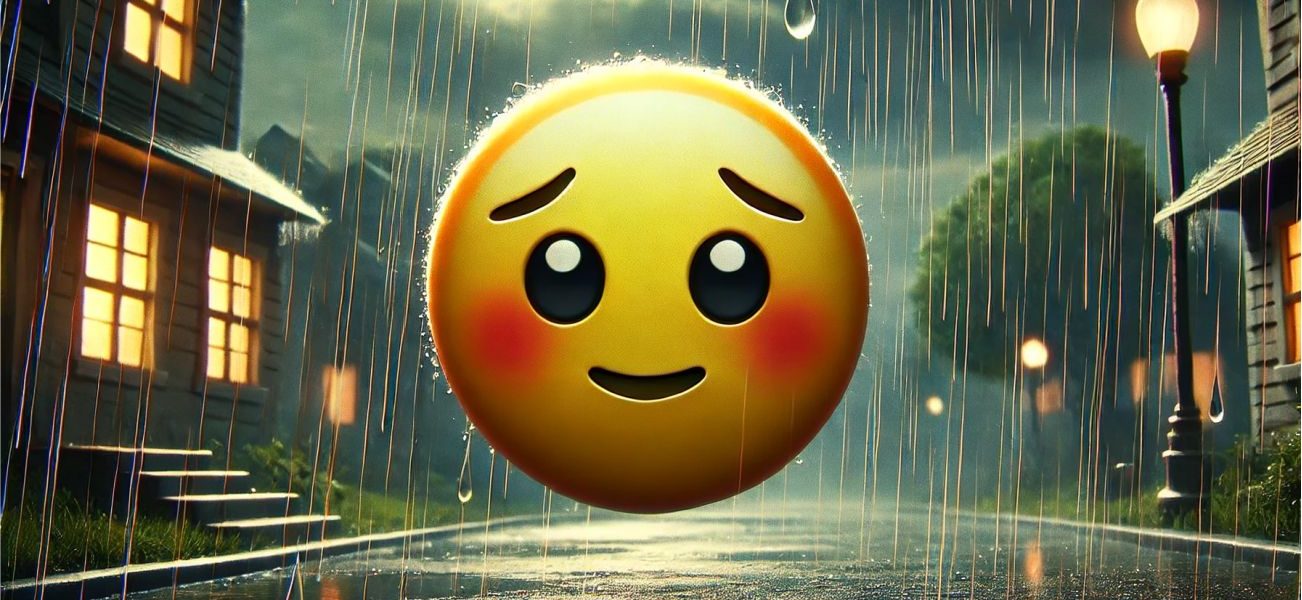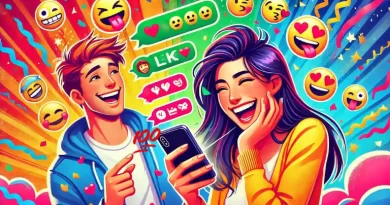Emoji tímido 🤭
Unlike other emojis that express overt emotions like happiness or anger, the shy emoji offers a subtle, layered expression. It’s a sign that invites connection, even as it acknowledges a sense of withdrawal.
The Shy Emoji 🤭 😳: Is That Blush Real or Just a Filter?
Shyness –represented with the shy emoji— is a complex, often misunderstood emotion. According to Kids Health dot com, about 20% of people have a genetic predisposition to shyness. It’s not about being weak or timid; it’s about feeling vulnerable in social situations, and the shy emoji perfectly captures that blend of hesitation and charm. It’s a digital whisper saying, “I’m here, but I’m a little scared.”
The little yellow face has become a powerful tool for people to express themselves without words. It’s a way to bridge the gap between feeling shy and wanting to connect.
How People Use Shy Emojis in Various Contexts
1. Personal Conversations: Adding a Touch of Vulnerability
In personal conversations, the shy emoji is often used to add a layer of emotional depth. Whether it’s responding to a compliment, sharing a personal story, or expressing gratitude, the shy emoji helps convey that sense of vulnerability. It’s a way of saying, “I’m not quite sure how to react, but I appreciate it.” That usage helps people connect on a more personal level, fostering empathy and understanding in their interactions.
2. Social Media: Expressing Modesty and Humility
On social media, the shy emoji is frequently used to show modesty and humility. For example, when someone posts an achievement or milestone and wants to downplay their success, they might use the shy emoji to temper their announcement. That helps them present their achievements in a more relatable and humble way, making their posts feel more genuine and approachable.
3. Professional Communication: Navigating Awkward Moments
In professional settings, the shy emoji may be used to deal with moments of awkwardness or uncertainty. If someone is introducing a new idea or making a request that they feel hesitant about, the shy emoji might help soften the message and express their modesty. The usage helps balance professionalism with a touch of personal warmth, making communications feel more human and less rigid.
Why The Shy Emoji Looks Flower-Like
The shy emoji 🌸 features a flower-like image, specifically a pink flower, as a symbol of shyness and modesty. That choice of design draws on the gentle and delicate nature of flowers, which metaphorically represent the subtle and nuanced emotions of shyness. The flower’s soft, blush color and the emoji’s averted gaze create a visual harmony that conveys the idea of shyness without being overt or overwhelming.
Other Emojis That Represent Similar Emotions to Shyness
Several other emojis capture emotions similar to those expressed by the shy emoji 🌸:
-
Blushing Face 😊: Often used to convey embarrassment or modesty, the emoji shows a smiling face with rosy cheeks, similar to the shy emoji’s representation of shyness.
-
Face with Hand Over Mouth 🤭: The emoji depicts surprise or shyness, with a hand covering the mouth, conveying a sense of hesitation or embarrassment.
-
Pensive Face 😔: Though less specific to shyness, the emoji shows a downcast expression that represents feelings of sadness or introspection, which may overlap with shyness in certain contexts.
The emojis, like the shy emoji, help users communicate nuanced emotions and reactions, adding depth to digital conversations.
How to Enjoy Conversations When You Are Shy
Being shy doesn’t have to limit your ability to engage in meaningful conversations. Here are some tips to help you make the most of your interactions, even when shyness is a factor:
1. Embrace Your Shyness
Acknowledge that shyness is a natural part of who you are and embrace it as a unique aspect of your personality. Using the shy emoji 🌸 in conversations should help you communicate your feelings more effectively and let others know that your reserved nature is part of your charm.
2. Prepare in Advance
Before entering a conversation, especially if it’s a new or potentially challenging one, take some time to prepare. Think about what you want to say and how you might express yourself clearly. That preparation helps reduce anxiety and make you feel more confident.
3. Use Non-Verbal Cues
If verbal communication feels daunting, rely on non-verbal cues like emojis to express your emotions. The shy emoji 🌸 may help convey your feelings of modesty or hesitation without requiring you to articulate them explicitly.
4. Focus on Listening
Being a good listener is a valuable asset in conversations. Paying close attention to others and showing genuine interest in what they have to say so that you’ll engage in meaningful interactions without feeling the pressure to constantly speak.
5. Take Small Steps
Gradually challenge yourself to step out of your comfort zone in social situations. Start with smaller, less intimidating interactions and build up your confidence over time. Each positive experience will help you feel more comfortable in larger or more challenging conversations.
Preguntas frecuentes
1. How do I use the shy emoji to improve my communication?
To use the shy emoji effectively, incorporate it in contexts where you want to express modesty, vulnerability, or a subtle reaction to compliments or praise. It adds emotional depth to your messages and helps convey feelings that words alone might not fully capture.
2. Is it appropriate to use the shy emoji in professional communications?
Yes, the shy emoji might be appropriate in professional settings to soften requests, address awkward moments, or add a personal touch to formal messages. Use it sparingly and ensure it aligns with the tone and context of your communication.







